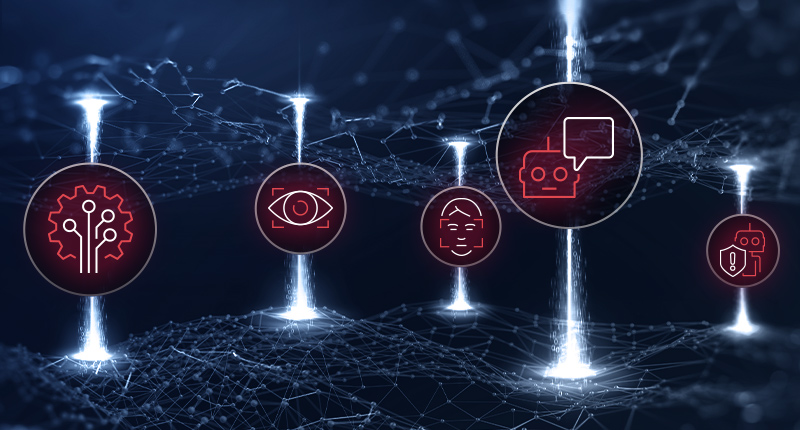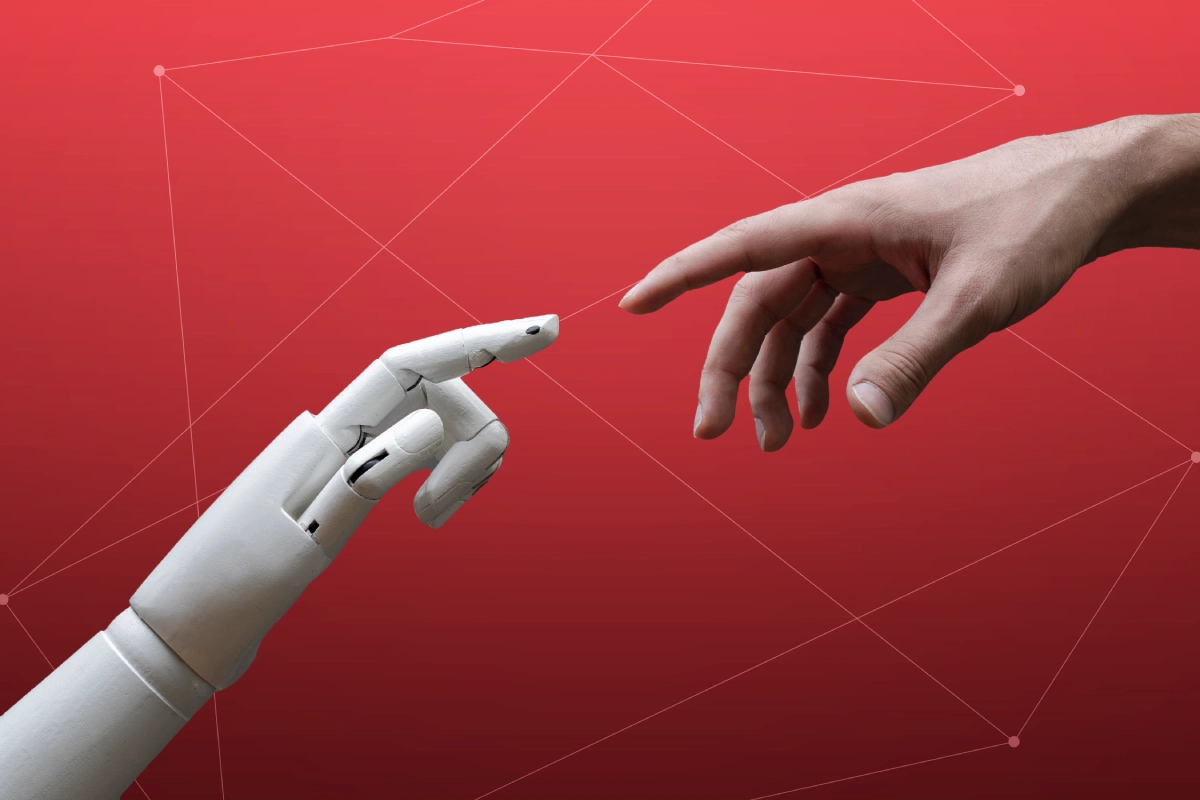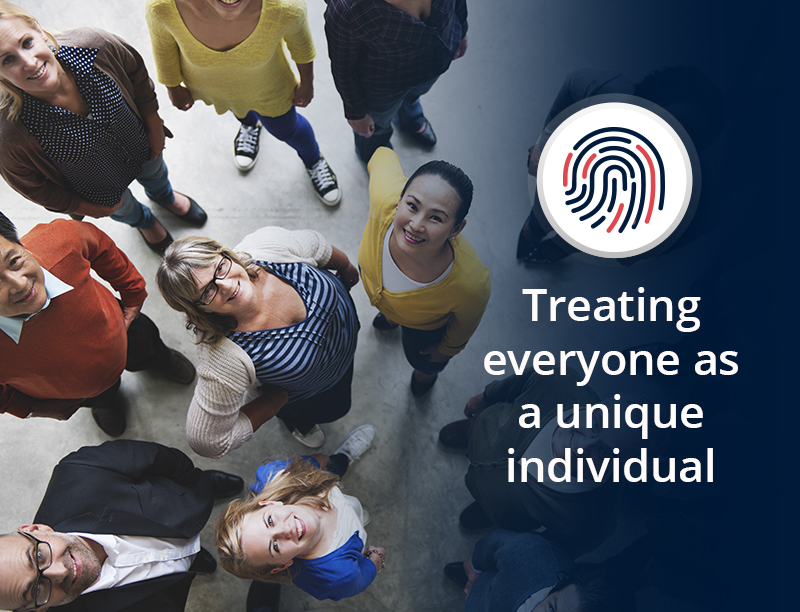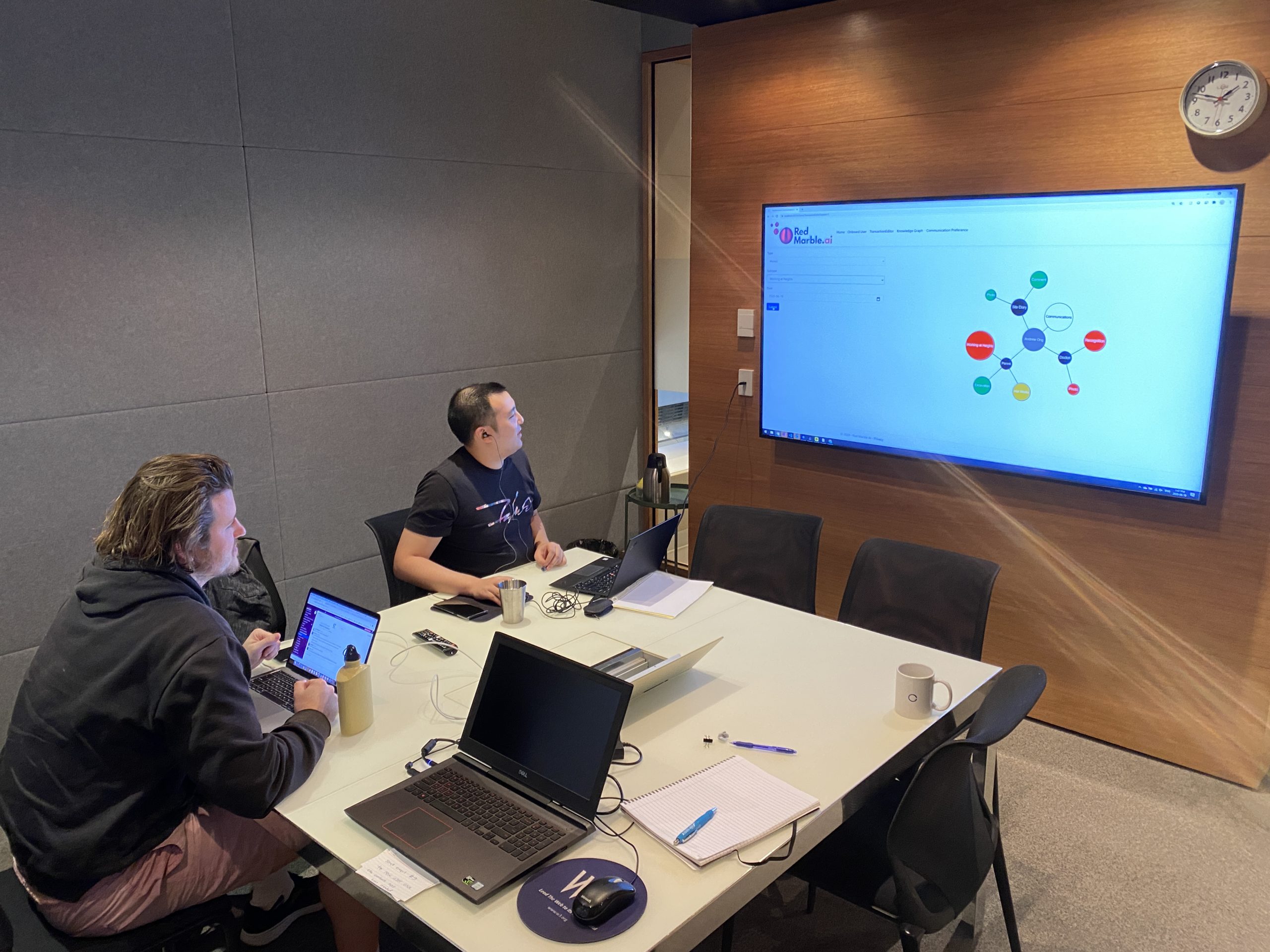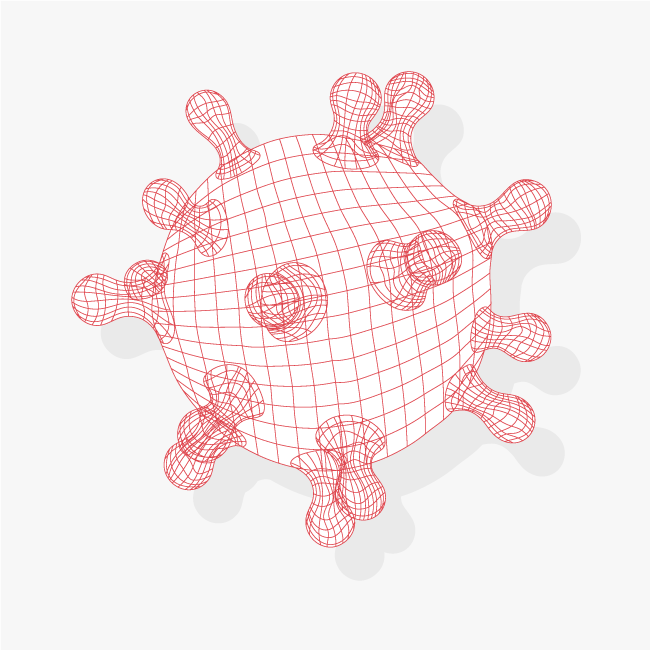
We’re extremely proud of our track record of successfully deploying artificial intelligence and machine learning models to enterprise customers.
But artificial intelligence (AI) and machine learning (ML) are pretty broad fields. And we know you probably need a little more background on what we actually ‘do’.
So – here is a rundown of the five types of AI, or patterns, our work generally falls into – and how each pattern can bring benefits for your business.
Red Marble’s five types of AI
1. Prediction
Artificial Intelligence can give you the ability to predict the future! Or rather, it can predict the probability of a certain event occurring in the future, based on historical data.
Here are a few examples:
- Forecasting conversion rate for an online retailer
- Alerting when a machine is likely to be due for maintenance
- Determining whether a member of a footy team is likely to sign up again next year
- Predicting the likely valuation of a particular commercial property
To generate business value from prediction, you need to act on the information quickly – often in real-time. That combination of the ‘nugget of gold’ insight along with the right advice on how to apply it is what will bring big benefits for your business.
When we’re working with a client, our machine learning engineers and data scientists partner closely with subject matter experts who know the business well. We’re a big believer in these partnerships – we know AI inside out, but to properly capitalise on opportunities in different industries, we like to surround ourselves with diverse skills and experience.
2. Recognition
AI can recognise humans, objects or situations in a scene or recognise patterns in data. Businesses can use this in many ways.
Here are a few examples:
- Recognising heavy machinery on a pedestrian area of a work site
- Analysing whether a pizza has enough toppings as it comes out of the oven
- Checking whether your staff are wearing masks during COVID lockdown
Businesses can use AI recognition to maintain the processes that make them great. Quality assurance teams can make sure each product heading out the door is at the right standard, and HR teams can use AI to ensure the safety of their teams.
3. Hyper-personalisation
This is one of the AI patterns we believe will generate tremendous value for organisations.
Hyper-personalisation is where we use machine learning across different data sources to build a unique profile of an individual. This means we can generate actions and content specific to that individual – such as personalized marketing or offers.
We’re all familiar with hyper-personalisation in one way or another. The most common example is your Netflix queue or the recommendations you get when you log into Amazon. This kind of engine – technically a set of algorithms – is hugely valuable for companies for engaging both their employees and their customers.
A few possibilities:
- Offering specific holiday offers for families based on their demographics and location
- Selling slightly more expensive wine to a regular online wine customer
- Unique insurance offers based on a customer’s history, location or family status
- Sending each employee a dynamic onboarding email based on their department, skills or interests
The possibilities of hyper-personalisation are really exciting for businesses. It facilitates one-to-one marketing, or unique learning paths for every employee. We’ve seen its power already, but we think it’s just getting started.
4. Conversation and language
This pattern of AI allows humans to interact with software using words – either by speech or text. The AI understands and infers intent and meaning from those words.
We believe that, in time, natural language will be the ultimate user interface. Just say or type what you want and the software understands. We do this already with Google Home or Alexa, but we see the application of voice assistants rapidly expanding into workplaces – especially as AI’s ability to infer meaning develops.
A few ways conversation and language AI could be used:
- Recording, transcribing and uploading the CEO’s shareholder message
- Analyzing work notes to see if any indicate a potential contractual claim
- Listening to sales calls to infer the percentage probability of closing a deal
AI has the ability to change how people work within corporate environments – both helping employees save time and be more efficient, and by adding value at crucial points.
5. Outlier detection
This is the ability to detect unusual activity and behaviour outside of the norm.
Anomaly detection is widely used in fraud prevention and cyber-security or to detect specific events from sensor data. It’s also increasingly used in medicine and in industrial environments.
A few examples:
- Spotting cancers and anomalies in medical scans
- Detecting when a machine is not running smoothly by its acoustic signature
This kind of detection is a powerful defence and protection against negative unforeseen events.
How can you leverage different types of artificial intelligence?
When people wonder what AI is, or what do we actually do in a machine learning project, the answer is usually one of these five patterns – prediction, recognition, hyper-personalisation, conversation and language or outlier detection.
These forms of machine learning are already able to create value within your organisation. We encourage you to think about how your business works – would you benefit from being able to predict the future? Spot anomalies? Speaking to each customer or prospect individually?
To find out more about which types of AI can work for your business, get in touch.
We appreciate your interest and look forward to sharing more with you!
